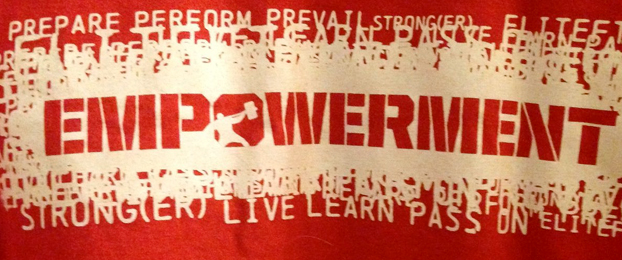
Lately, a few of the leaders in our business (Cosgrove, Cressey, and Robertson to name a few) have published articles with this catchy “ah-ha” title. I’m sure they’ve made each one of us sit in front of our computers and say, “Dang, he’s right.”
Every one of us has had these “ah-ha” moments from time to time in whatever it is that we do. I took this idea and applied it to becoming a strength and conditioning professional at the collegiate level.
- The graduate assistant experience is priceless.
As I think back on working 60-hour work weeks in the weight room, taking three night classes per week, making countless protein shakes for athletes, consuming countless protein shakes intended for athletes, designing golf and cheerleading programs, and picking up lunch for the boss, I wonder how I managed to pull it all off. On second thought, I wouldn’t trade that experience for anything in the world.That experience shaped the strength coach that I am today. I’m willing to spend the extra time with an injured athlete or clean up the weight room for a recruiting visit because of the hours spent doing those chores for nothing. To this day, I sometimes have to remind myself that I actually get paid for the job that I do. It’s amazing.
- The training environment encompasses more than just lifting.
I would go home every night with a smile on my face if my job only entailed writing a workout on the board, supervising it, and calling it a day. Why is my job necessary? Why wouldn’t the head football coach who I work for just save the money that he spends on my salary? He could just call up LSU or Ohio State, ask them to send him a workout, write it on the board, and be done with it. After all, if we want to be the best, we have to train like the best. Right?In my weight room, I strive for an environment where each individual athlete is important. Along with physically improving their bodies, athletes have to feel like they’re improving their bodies, and they have to have at least an idea as to why they are doing the work. I also work to make myself indispensable to the program. In other words, if I didn’t show up one day, I want the athletes to know it.Many years ago, I visited Dr. Mike Gentry, the director of strength and conditioning at Virginia Tech. I posed a simple programming question to him. Here is the response that he gave me: “You can write the greatest, most physiologically sound program in the world, but if you can’t coach it up, it is worthless. However, you can write a dog crap program, but if you get your athletes to believe in it, they will get stronger.” This is the programming philosophy that I live by to this day.
- The learning process never stops.
When I first started in this business, I thought that I was the king of the industry. I could do no wrong. My boss was wrong, the athlete was wrong, and I was never going to change. Straight Western linear periodization got results. I would argue this with anybody who would listen. Well, I will be the first to say—boy was I wrong!When my eyes were opened to different styles of training and different periodization strategies, I was sold. I had to come to the realization that training styles are similar to offensive strategies in the game of football. What works for one team may not work for another. One time I was so excited about conjugate periodization that I tried it with a female soccer team. They weren’t that excited about training anyway. Needless to say, it was hard to get them up for multiple max effort activities each week. Heck, what am I saying! It was hard just to get them up each week out of bed!Whether you believe it or not, there is a place in your program for all styles of training. I utilize conjugate methods, linear methods, undulating methods, and even some HIT methods, which I find great for mentally testing some of my athletes. The bottom line is everything works, but nothing works forever.
- The sport coach must be on board.
If the sport coach isn’t behind you, it will be tough to get his athletes behind what you are doing. This is a fact. I find that my most successful teams in the weight room are the ones that have a sport coach who sells what we do. If the sport coach just uses the strength program because he has to or even as a babysitter (yes, it happens), the athletes will treat the program the same way.The next time that you are working with a team, take a look around. If the athletes are busting their tails, I bet that they have a sport coach who sells your program. If they are just going through the motions, I bet that they have a sport coach who could care less about the strength program. I suggest that you get out and sell your program. Show them the benefits that your program can provide. It can be that simple if you’re having problems with a challenging team or individual.
- Live what you do.
Nothing bothers me more than a strength coach who can’t perform simple fundamental movements like body weight squats. Athletic trainers are notorious for being out of shape. Yet, many athletes take advice from these people on the improvement, maintenance, and nourishment of their bodies. Unbelievable! It is hard to ask an athlete to do a complex variation on an Olympic lift if you are unable to demonstrate a body weight chin-up.Simple solution! Get in shape, stay in shape, try new exercises and programs, experience what your athletes are feeling, train hard, keep a clean diet, and practice what you preach. Nobody likes a hypocrite.








